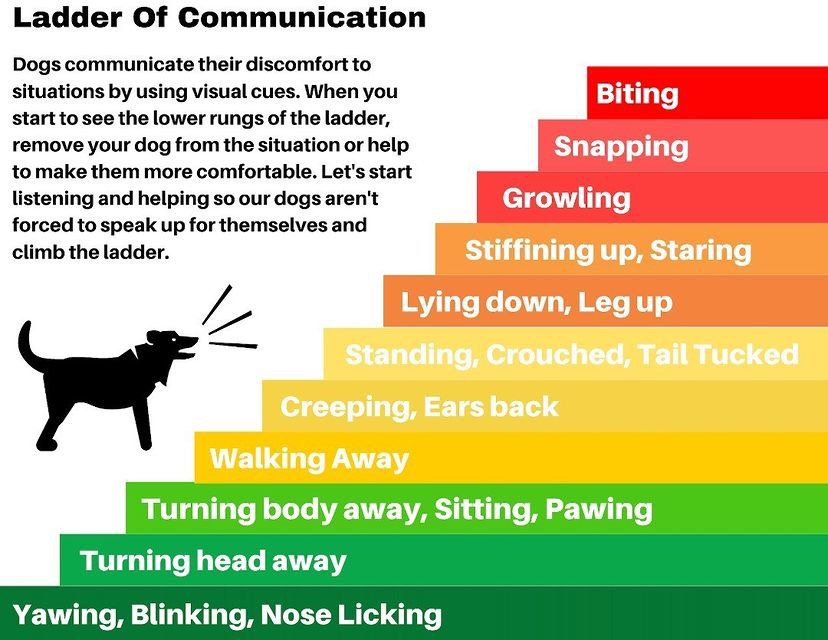Tip Four: Management is your best friend!
As mentioned under proactive supervision – making sure your dog has a “safe zone” is essential. Management gives both parents and our dogs a break from the chaos and to help our dogs feel safe. Supervising 24/7 is stressful and tiring for us as parents and for the dogs. Management includes kids gates, playpens, closing doors, tethers, etc. Create your dogs “safe zone” today if you don’t have one already and start getting your dog used to it slowly and gradually in a positive way. The best way to make separation/ management a positive is to start slowly and gradually and to include food enrichment – like a kong, lickimat or a chew toy to help your dog settle into it. Separation should not be seen as punishment or a negative – rather it is a way to let everyone chill and have a break.
Tip Two: Understand your dog’s body language and know when to help so they are not forced to speak up for themselves
There are often lots of signs before a dog growl’s that are often missed if you don’t truly understand how to read a dog’s body language. So, let’s go through this today so you can help your dog before they feel the need to growl.
Dogs communicate in completely different ways to humans. The only way we can truly know how a dog is feeling is by watching their body language. Tuning into your dog’s body language is a powerful way to enable you to respond to your dog’s needs and support them in all situations. And believe it or not, not all tail wags equal a happy dog! There are different types of wags. Click here to find out more about this.
Many of the things we do as humans, our dogs do not in fact enjoy, eg. a pat on top of the head, a big bear hug, a kiss on the face, being carried around all the time, being smothered, meeting unknown dogs, the list goes on. Through body language, you learn to recognise when your dogs are feeling happy in a situation versus when they are not. Once you are aware of your dog’s body language, this means you can take action to stop or avoid stressing your dog out (i.e., a pat on the head) or give space from the stressor (i.e., another dog barking on the other side of the fence – cross the road rather than walking directly past if your dog is scared). Dogs love and need their space, so distance is key! If something is stressing them out, giving distance from that stressor can be really helpful.
Responding to your dog’s body language in this way is key to helping your dog live a happy life! But this can be very challenging when there are young kids in the picture.
As mentioned, a dog will most likely let you know when and if he is stressed in a situation before reacting with a bite. Some of these signs are obvious and sometimes these signs are quite subtle and hard to read if you are not familiar with them.
Subtle signs that a dog may be uncomfortable are:
More obvious signs include:
When it comes to kids and dogs, tolerance is not enough, we want dogs to enjoy their interactions, not just have to put up with them. And given you have heard a growl already; it is likely your dog is no longer wanting to tolerate your child. They have started to climb this ladder. So, we need to start listening and understanding their body language so this doesn’t happen again. By doing this we will help to rebuild positive trusting relationships in time.

What should you do if your dog growls at your toddler?
What to do When Your Dog Growls at Your Kids
Morgan: Mike, the question for today: “I didn’t prepare my dog for my baby. My baby’s now crawling, and my dog is growling – am I in trouble? Is it too late?”
This is one of the most frustrating calls that I get, when people call me with that question. And of course, I have these a lot more than I would like to see.
When somebody’s taken no time and hasn’t bothered with any of it – despite the fact that they had 16 months to prepare – and not given this even a smidgeon of thought. They haven’t done it.
And if the dog starts growling at the baby when it starts crawling, that’s just enough to trigger. These are pretty obvious problems all along, generally. It’s something they should have picked up on, right?